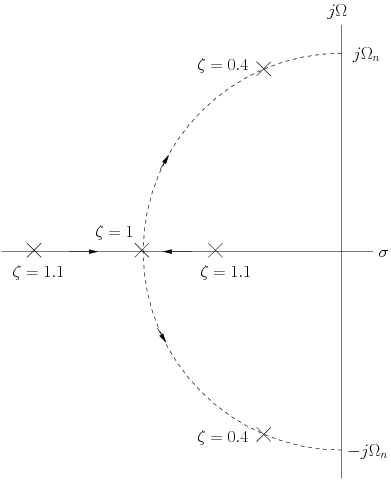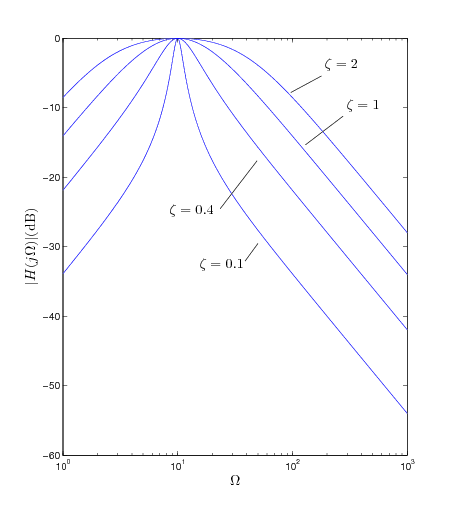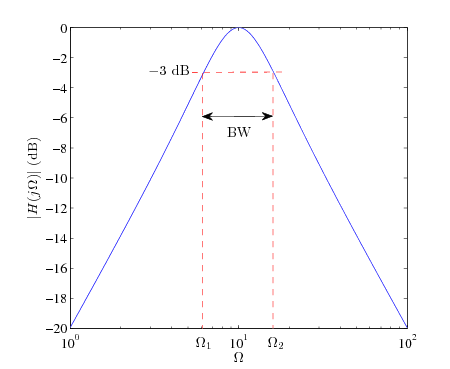| << Chapter < Page | Chapter >> Page > |
The second-order lowpass filter has system function
where is the undamped natural frequency , and is the damping ratio . The undamped natural frequency and damping ratio are properties of the physical devices used to implement the second-order filter (capacitors, inductors, and resistors, in the case of an electrical circuit). It so happens that the damping ratio satisfies . Using the formula for the roots of a quadratic polynomial, the two poles of are easily found to be
There are three possible sets of poles that are categorized as follows:
A root locus diagram shows the paths that the poles of would take as the damping ratio is decreased from some number greater than 1 down to 0, and is shown in [link] .

The frequency response of the second-order lowpass filter can be found using the substitution , giving
The frequency response magnitude is shown in [link] for and several values of . Note that for the underdamped case, there is a resonance or peak that would be expected to maximize at the undamped natural frequency , when .

We also observe that for the critically damped case, since
setting gives . Moreover, it is clear that for , and for , . These ideas will be used later when we discuss Bode plots.

Second order filters can be implemented using either passive or active circuit elements. We will consider the series RLC circuit shown in [link] . A lowpass filter results by taking the filter output to be the voltage across the capacitor. Using voltage division, the system function is easily found to be
Comparing [link] with [link] we find that the undamped natural frequency is , while , giving the attenuation coefficient:
A second-order highpass filter is implemented by taking the output of the filter to be the inductor voltage in the series RLC circuit. The resulting system function is
So in terms of the undamped natural frequency and damping ratio, the second-order highpass filter is given by
The graph of the frequency response magnitude of this filter is shown in [link] for several damping ratios and .

Not surprisingly, a second-order bandpass filter results by taking the output of the filter be the resistor voltage in the series RLC circuit. The system function is then
This can be expressed in terms of and as
Setting in [link] gives the frequency response of the second-order bandpass filter
The magnitude of this frequency response is shown in [link] where .

Evidently, the frequency response peaks at . To prove this, we can divide the numerator and denominator of [link] by , giving
where
It is easy to check that and . Therefore does in fact peak at .
The bandwidth of bandpass filters is typically measured as the difference between the two frequencies, and , at which the gain has dropped by 3 decibels from its peak of 0 dB. A diagram of this is shown in [link] .

Formulas for and can be found by solving
since if , we get . Solving the quadratic equation gives two solutions:
while solving gives two additional solutions
Since , we pick the two positive solutions as the “corner” frequencies:
The two negative frequencies are just the negatives of the two positive frequencies (recall that has even symmetry). So the bandwidth is . It can also be readily verified that , that is, the center frequency of the bandpass filter is the geometric mean of the two corner frequencies. The qualify factor , is defined as
and is a measure of the narrowness of the filter bandwidth, with respect to its center frequency. It can be seen that .

Notification Switch
Would you like to follow the 'Signals, systems, and society' conversation and receive update notifications?